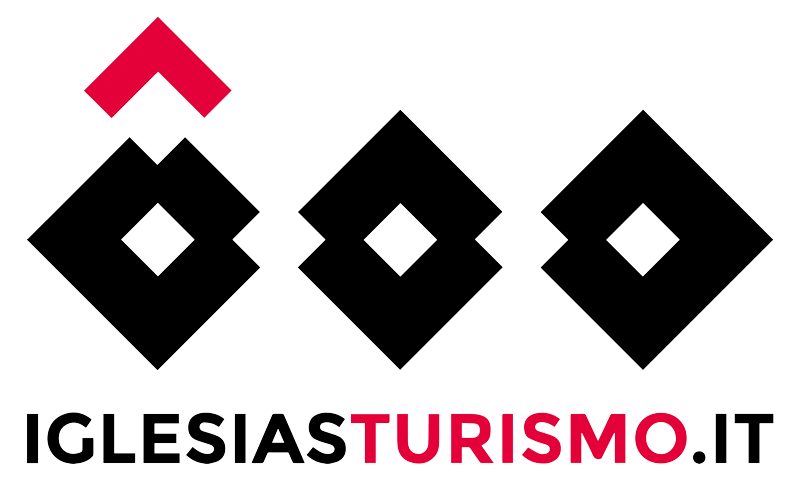Porto Flavia

Porto Flavia is an unmatched monument of industrial archaeology. It is a mining structure that is no longer operational, overlooking the beautiful southwestern coast of Sardinia. Every year, tens of thousands of visitors from all over the world are fascinated by the work that revolutionized the system of mineral transport in the 20th century. 1. THE HISTORY OF PORTO FLAVIA Despite being part of the Masua mining complex, Porto Flavia has never been a mine, but rather a shipping port for material extracted from nearby mines. The port was designed by the Venetian engineer Cesare Vecelli and built in 1924. In just two years, an unprecedented mining engineering work took shape and was named after the engineer’s eldest daughter, Flavia. The construction The work was carried out by excavating two overlapping tunnels inside the mountain. The upper gallery was used to unload the extracted materials, and the lower one to load them onto ships through a retractable conveyor. Between the two galleries, nine enormous silos were installed, capable of holding up to 10,000 tons of mining material. The port remained operational until the 1960s when it was gradually abandoned with the termination of mining activities in the area. In the 2000s, Porto Flavia underwent a restoration intervention and is currently open to tourists through guided tours. 3. HOW TO GET THERE To reach Porto Flavia, take the State Road 130 Iglesiente to Iglesias, then take the State Road 126 Southwest Sardinia towards Gonnesa. Just before arriving in Gonnesa, take Provincial Road 83 following the signs for Masua and Porto Flavia. Near the mining site there is a small parking fee, after about 200 meters walk you reach the ticket office. 4. TICKETS AND USEFUL INFORMATION For safety reasons, access to the mining site is limited, so it is strongly recommended to purchase tickets in advance. Tickets for the guided tour of Porto Flavia can be purchased: Due to extraordinary maintenance works, visits to Porto Flavia mining site will take place only in the upper gallery up to the sea overlook.Until further notice,the tour will still have the same duration, which is 50 minutes.We apologise for the inconvenience caused. English tour at 11 am – 12 am – 2 pm – 4 pm – 6 pm The guided tour lasts about 50 minutes and takes place on a fairly regular dirt path. For this reason, with the necessary evaluations applicable to individual cases, the site is accessible, with the presence of a guide, to those with motor disabilities. It’s recommended to arrive at the ticket office, with the paper or digital ticket receipt, 15 minutes in advance. Latecomers will not be admitted and will not be entitled to a refund. We also recommend sporty clothing and it is mandatory to have closed and comfortable shoes. Mandatory clothing suitable for visiting a museum site (no swimsuits, heels and flip-flops).Pets are not allowed, children under one year of age must be transported with the use of a front baby carrier and a small protective headgear that will be provided by on-site staff. PRICES Full: 10.00 € Reduced (children aged 6/12 and seniors +65): 6.50 € Groups (at least 20 adults): 8.00 € Schools: 6.50 € (not available for purchase online) For groups larger than 20 people, please contact the Tourism Office. INFORMATIONS Address: Ufficio del Turismo Piazza Municipio, 1 – 09016 Iglesias – SU Telephone: +39 0781 274507 E-mail: infoturistiche@comune.iglesias.ca.it Telephone or email reservations are not accepted. 5. WHAT TO SEE NEAR PORTO FLAVIA Porto Flavia is one of the wonders of the Iglesiente coast, but it is not the only one. Here are other suggestive places to visit nearby: Pan di Zucchero It’s the highest sea stack of the Mediterranean with its 133 meters of height. You can admire it from Porto Flavia, Masua beach or from the sea. In limited periods it’s also a popular destination for for rock climbing enthusiasts. Masua Beach Masua beach is located in Iglesias. It’s a beach with fine golden sand. The sea has a mainly sandy bottom and a different color depending on the reflections. Laveria Lamarmora It is a former facility that was used for sorting and washing minerals, a task predominantly carried out by women. Today, the structure, or at least what remains of it, dominates the magnificent Nebida cliff and is one of the favorite backgrounds for souvenir photos in the Iglesiente area.
Seddas Moddizzis Mining Village

The Asproni Mining Village, also known as Seddas Moddizzis, was built at the beginning of the twentieth century to house the employees of the Gonnesa mine. It consists of about a dozen buildings, immersed in an area of great environmental interest. The access road to the village leads to the square where there are the Asproni residence, which has an internal courtyard and the central tower, and the management building. In addition to the workers’ houses, the cellar-shop near the square is of interest, with a high arched porch currently used as place of events, and the church of Santa Barbara, with exposed stonework, which is located in an elevated position, on the northern border of the village. To visit the village, it is necessary to book a guided tour at +39 347 3213028 or +39 331 7726838, send an email to villaggiominerarioasproni@gmail.com or visit the website www.villaggiominerarioasproni.it INFORMATION Address: Località Seddas Moddizzis, Iglesias 09016 CI Telephone: +39 347 3213028 | +39 331 7726838 E-mail: villaggiominerarioasproni@gmail.com Website: www.villaggiominerarioasproni.it
Pozzo Sella

Pozzo Sella, located inside the Monteponi site, was built between 1872 and 1874 to extract water that prevented the cultivation of minerals. Over time, the remarkable exterior structure, with its distinctive architecture, was used to house the mine’s technological services, such as the mechanical workshop, forges, and carpentry. Stopping at Pozzo Sella gives the chance to live a unique journey through time, bringing visitors back to the era of the mine’s full activity, giving the sensation that the miners only abandoned those places a few days before. Guided tours of Monteponi and Pozzo Sella are organized by reservation only. INFORMATION Address: Località Monteponi, 09016 Iglesias SU E-mail:associazionepozzosella@gmail.com
Monteponi

The imposing mining complex on the outskirts of the city of Iglesias came to life thanks to a concession from the Kingdom of Sardinia in the mid-nineteenth century. Led first by Giulio Keller, a skilled Hungarian engineer, and then by the just twenty-three-year-old Adolfo Pellegrini, the works gave rise to the splendid Bellavista building, headquarters of the management, accommodation for miners and shops, some washhouses for the sorting of minerals, and structures for the mining activity including the most important ones: Pozzo Sella and Pozzo Vittorio Emanuele connected by the Galleria Villamarina. During its golden period, Monteponi hosted up to 1,000 workers. Today, anyone who wants to get an idea of the mining past of Sulcis must absolutely visit the now abandoned village, which stands imposing and somewhat spectral on the ridge of a hill a few kilometers from the city. It is suggested to fully enjoy the atmosphere and have all the elements for understanding the places, to take advantage of the guidance of one of the skilled local guides. INFORMATION Guided tours are by reservation only and are managed by Cissa. Address: Villa Bellavista, Località Miniere Monteponi, 09016 Monteponi CI Telephone: +39 0781274507 E-mail: infoturistiche@comune.iglesias.ca.it
Villamarina Gallery

It takes its name from the Marquis of Villamarina, viceroy of the kingdom of Sardinia, and was excavated in 1852 at 174 meters above sea level. The gallery connected the two main shafts: the Sella shaft and the Vittorio Emanuele shaft. The first was designed by engineer Pellegrini to extract the water that prevented the mining of minerals, while the Vittorio Emanuele shaft transported people and minerals. A visit to the gallery is a charming immersion in the underground dimension of the mine. TICKETS AND USEFUL INFORMATION The number of visitors is limited for safety reasons. It is strongly recommended to purchase tickets before the visit. Tickets for the guided tour of Galleria Villamarina can be purchased: It is recommended to arrive at the ticket office with the paper or digital ticket receipt 15 minutes before the visit. Latecomers will not be allowed to enter and will not be refunded. The guided tour lasts about 1 hour and takes place on a fairly regular dirt road. For this reason, with due consideration for individual cases, the site is accessible, with a guide, to those with motor disabilities. It is mandatory to have closed shoes, and recommended to have a jacket. English tours at 11 am, 2 pm, 4 pm, 6 pm. Babies cannot be picked up: they must walk the entire way or be carried in a baby carrier.No pets allowed. PRICES Full price: 10.00 € Reduced (children aged 6/12 and seniors over 65): 6.50 € Groups (at least 20 paying adults): 8.00 € Schools: 6.50 € (not available online) For groups larger than 25 people, please contact the Tourism Office. INFORMATION Address: Ufficio del Turismo Piazza Municipio, 1 – 09016 Iglesias – CA Telephone: +39 0781274507 E-mail: infoturistiche@comune.iglesias.ca.it
Laveria Lamarmora and Nebida mine

It is one of the most evocative monuments of the mining landscape. Set on the slope overlooking the sea of Nebida, today it is the majestic ghost of an ancient ore washing facility. During its operational period, the facility was used for the selection and washing of minerals, a task mainly assigned to women. The ore washing facility was located near the calcination ovens, the storage warehouses, and the pier from which materials were shipped. The main materials processed were lead and zinc. In 1919, Nebida was home to three thousand people, one third of whom worked in the mine. The mine experienced a long period of prosperity in the first half of the 20th century, interrupted only by the two world wars and closed permanently in the seventies. Today, the skeleton of the ancient structure stands on the magnificent cliffs of Nebida in front of the 5 sea stacks and is one of the favorite backdrops for souvenir photos of the Iglesiente region. The site is currently not visitable due to safety work.
Santa Barbara Cave and San Giovanni Mine

The Santa Barbara Cave provides the most stunning surprise effect in the Iglesiente tourist offer: a unique treasure in the world made possible by human work and natural forces. Even the history of its discovery is surprising. In 1952, during excavation for the construction of an ascending tunnel, the incredible spectacle of this magnificent cavern appeared before the astonished eyes of the workers who had demolished a rocky wall. The great natural cavity was unknown to the scientific world because it was hidden in the heart of the mountain. The cave is an exemplary case for its dark brown tabular barite crystals that cover the walls, between the waxy limestone layer and the yellow silicified dolomite, formations from the Lower Cambrian period dating back to about 500 million years ago. This site of great charm is located inside the San Giovanni Mine and is accessible through an intricate system of underground tunnels made accessible by a train that, after a 700-meter ride, leads to an elevator that rises along a shaft. From the entrance, located at the top of a spiral staircase, a real underground cathedral opens up, sparkling and majestic. The rock formations carve fascinating and colorful bas-reliefs making the cave a magic place. San Giovanni is one of the oldest mines in Sardinia, exploited during the Roman and Pisan periods, and perhaps even earlier during the Nuragic period. Industrial activity was undertaken in 1867 by the English company Gonnesa Mining Company Ltd, which began the exploitation of Pb/Ag minerals (argentiferous galena) and Zn (calamine and blende). The mine was also distinguished by modern mineral processing facilities, including one of the first mechanical washing plants and innovative flotation units. Disadvantageous market situations, increased energy costs for water pumping, and the decreasing ore grade led to the closure of the mine in 1998, the last one in Iglesiente to cease activity. TICKETS AND USEFUL INFORMATION The number of visitors is limited for safety reasons. It is strongly recommended to purchase tickets before the visit. Tickets for the guided tour of the Santa Barbara Cave can be purchased exclusively: It is recommended to arrive at the ticket office with the paper or digital ticket receipt 20 minutes in advance. Late arrival will result in the visit being missed and no refund will be given. The visit lasts approximately 1 hour and 15 minutes and includes entry to the mine via a motorized train and an elevator; access to the cave is via a spiral staircase. English tour at 11:30 am and 3:30 pm. The temperature inside the cave is between 16/18 °C. Sportswear is recommended, and it is mandatory to have closed shoes. Babies cannot be picked up: they must walk the entire way or be carried in a baby carrier.No pets allowed. PRICES Full price: 15.00 € Reduced price for children (ages 6-12) and seniors +65: 12.00 € Groups (at least 15 paying adults): 13.00 € Schools: 12.00 € (not available for online purchase) For groups larger than 15 people, please contact the Tourism Office. INFORMATION Address: Ufficio del Turismo Piazza Municipio, 1 – 09016 Iglesias – CA Telephone: +39 0781 274507 E-mail: infoturistiche@comune.iglesias.ca.it


